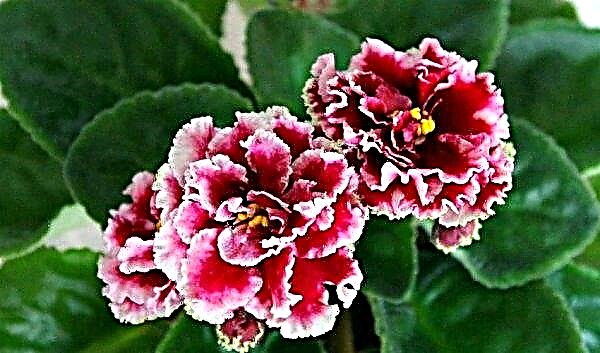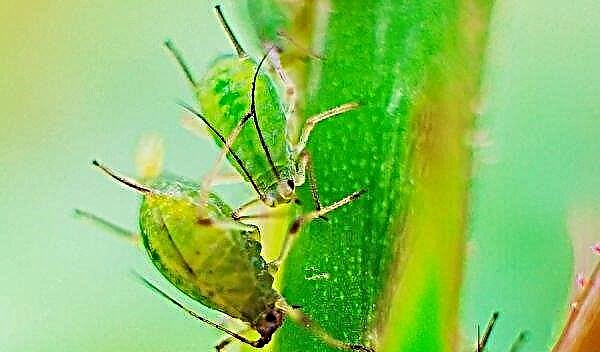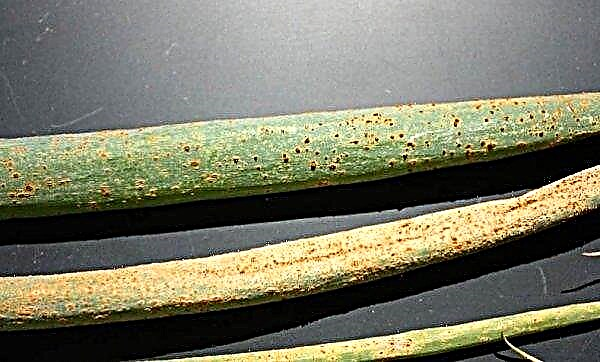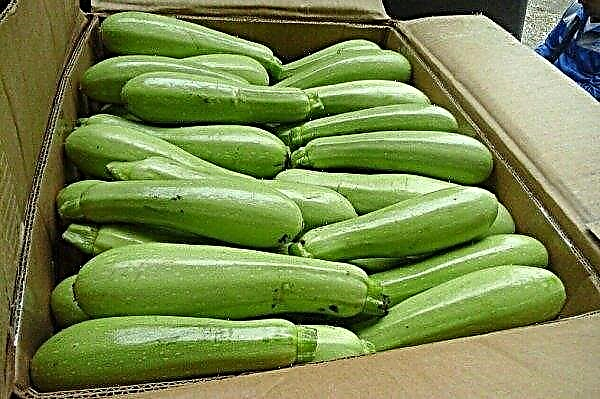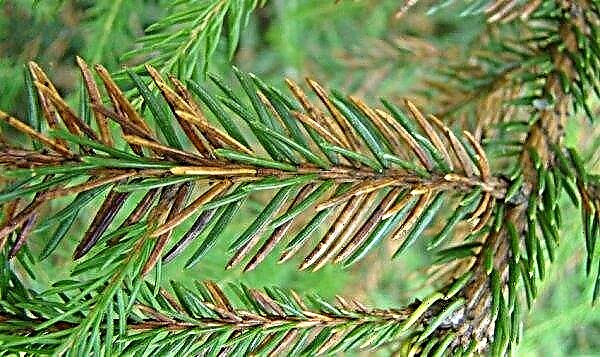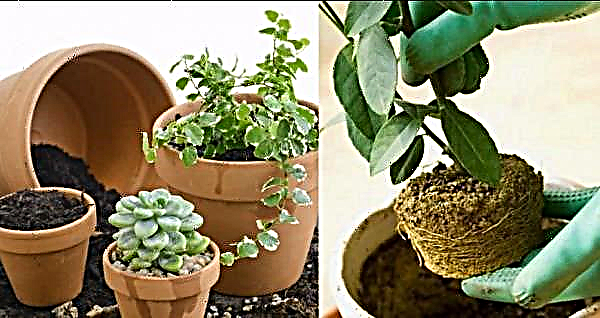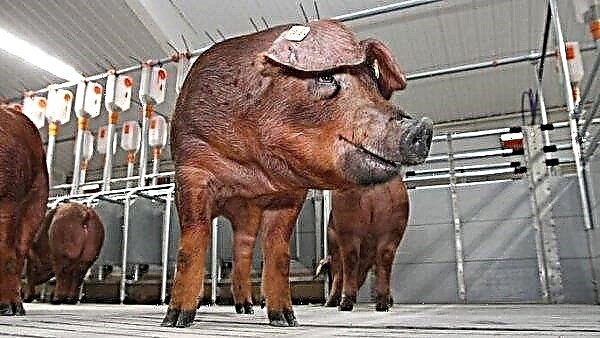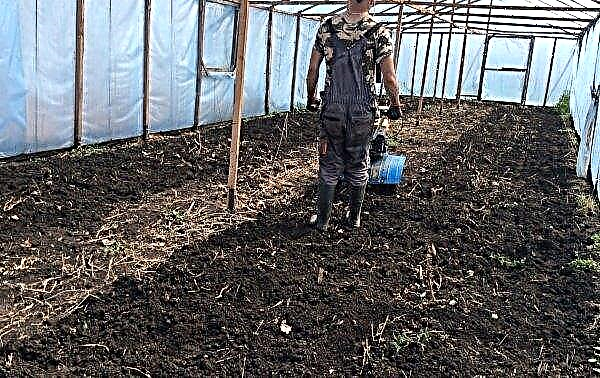Kalanchoe is a houseplant, familiar to many from childhood. It is a deciduous succulent, which has several methods of reproduction. About how flowering Kalanchoe propagates, and this article will be discussed.
How to propagate Kalanchoe
Kalanchoe are often found in florist shops and garden centers. Most of them are potted species that can be grown outdoors. Flowers begin to lose their activity in the second and third years of growth, so they are replaced with new copies. Reproduction methods are quite easy and quite accessible to everyone.
Considered succulent can multiply:
- kids
- a sheet;
- by seeds;
- cuttings;
- axillary kidneys.
Did you know? The name Kalanchoe is considered Chinese in origin. These plants are very popular as decorative indoor because of the low requirements for the content, in particular, watering and because of the bright colors.
Cuttings in water
After a flowering period, some varieties of Kalanchoe lose their appearance. They stretch out and become not very beautiful, therefore, they recommend growing a new one instead of the old plant. How to cut Kalanchoe:
How to cut Kalanchoe:
- Cut off the top so that you have a straight part of the plant with several leaves.
- Place the stalk in the stocky or eco-growth growth promoter for 18 hours. The stimulator will improve the survival of the cuttings and contribute to the growth of the root system.
- Prepare a pot with small drainage holes. Clay pots are a good choice for succulents because they are breathable.
- Fill the pot with well-drained soil. It can be succulent soil bought in a store or a mixture of 60% peat moss and 40% perlite. It is important that the soil does not retain moisture.
- Make a hole in the soil with a ballpoint pen.
- Place the stalk in the hole.
- Pour the stalk.
- Place the pot on a sunny windowsill, but not in direct sunlight.
Kids
"Viviparous" varieties breed by children. Miniature copies with two small leaves and roots appear along the edge of the sheet plate. As they mature, such children fall into the ground and take root, forming next to the main plant a green carpet of young Kalanchoe.
Important! Some types of Kalanchoe contain toxins that can cause heart problems in the animals that eat them.
You can collect several children by running your hand along the sheet: in it will remain specimens ready for rooting. Plant them in a small pot, and after a few months you will have new, well-rooted plants. Among the varieties that can be propagated in this way, Kalanchoe pinnate, tubular and Degremon.
Leaf
You can grow a new plant from a leaf of the previous one. Germination is best used at the beginning of the growing season from spring to early summer, although some species can be propagated year-round.
Important! Leaf propagation — one of the less reliable ways. Your sheet will rot if the temperature is below + 20 ° C, there will be insufficient light or a lot of moisture.
Always choose a healthy, young, fully grown leaf. Do not use diseased leaves or damaged by pests. Fill the pot with well-drained soil. A leaf of succulent should be left for a day or two to mature before planting. As a result of this, a thickening of the cut surface occurs, which is good for rooting.
- Take a pot of soil for succulents.
- Plant a leaf in it and pour.
- It is not necessary to cover it with anything, but be sure to put it in a warm place with good lighting.
- The soil must be kept moist.

Offspring
So that the Kalanchoe does not stretch up, you can cut off its top. This will limit the growth of the mother plant, but may also contribute to the occurrence of a offspring near the stem of the mother plant. It can be carefully disconnected as soon as it is large enough and put in a separate pot.
Axillary kidneys
This is one of the most common breeding options.
Did you know? Kalanchoe extract has the properties of an immunosuppressant. And Kalanchoe pinnata is registered in Trinidad and Tobago as a treatment for hypertension.
The process includes the following steps:
- Cut the axillary bud sprout from your Kalanchoe. Remove all leaves on the lower 5 cm branch except for the 2 upper leaves.
- Place the branch on a paper towel and leave for several days to allow it to dry (about 3 days).
- Dip the end of the branch into the growth stimulant solution for 20 hours. The hormone will stimulate the growth and development of the root system.
- Take a new pot with drainage holes.
- Fill the pot with well-drained soil.
- Make a hole in the soil with a ballpoint pen.
- Place the branch in the hole.
- Moisten the soil.
- Cover the seedling with a plastic bag, creating the effect of a greenhouse. You can not cover everything, but make several cuts on the bag and put it on the plant, covering the ground.
- Place the pot in bright, indirect sunlight and do not forget to water the seedling periodically (about once a week).
- Until the seedlings take root, do not move the pot.
- Remove the package after 2-3 weeks, when the root system is sufficiently developed.

Seeds
Propagation by seeds is a very interesting way: you can cross-pollinate 2 plants or more and come up with a hybrid that will possess the properties of the parent species.
To cross Kalanchoe, you will need 2 flowering plants. Take a small brush and go from flower to flower, brushing the stamens of one plant and the stigma of another.
Did you know? Kalanchoe — A very popular plant during the Chinese New Year celebration. The Chinese believe that it brings wealth and prosperity.
The resulting seeds can be germinated in warm, slightly moist soil. Soil composition: soil for cacti and leaf soil in equal proportions. Heat and humidity activate seed growth hormone. Germination will take about 10 days. You can dive seedlings after 6-8 weeks, and plant them in a permanent place - when they reach a height of 10-15 cm.
Common mistakes in breeding Kalanchoe
Common mistakes that occur during cultivation relate to non-compliance with the rules of care.
The main mistakes:
- Air temperature is below + 20 ° С - a young plant will stop its growth and take root poorly.
- The soil should be moist, but not wet, as this contributes to rotting.
- The shaded growth area also reduces the chances of germination.
- Watch for pests. Most often, Kalanchoe attacks aphids.
Transplant Rules
Kalanchoe, like most home plants, will outgrow the size of its pot over time. Plants that are not transplanted annually may suffer from the adverse effects of an excessively large root system. They cease to bloom and grow poorly, since the amount of soil in the pot is not enough for their development.
Succulents are prepared for transplantation in the spring, before the plant enters the phase of active growth. The optimal time for a transplant is February-March. The main rules to keep in mind when transplanting:
The main rules to keep in mind when transplanting:
- Stop watering two weeks before transplanting so that the soil is completely dry.
- Take out the flower from the pot.
- Remove some of the soil from the root zone by making small cuts along the sides of the root ball.
- Use part of the new porous soil for transplantation without destroying the existing root ball. The new soil is simply filled with voids around the ball.
- Before using new soil, check its acidity level. It should be neutral - from 5.8 to 6.3 pH.
As you can see, caring for Kalanchoe and its reproduction at home is very simple. The plant can be propagated in different ways, and all of them are approximately equally effective. You just need to choose one that is most convenient for you.

